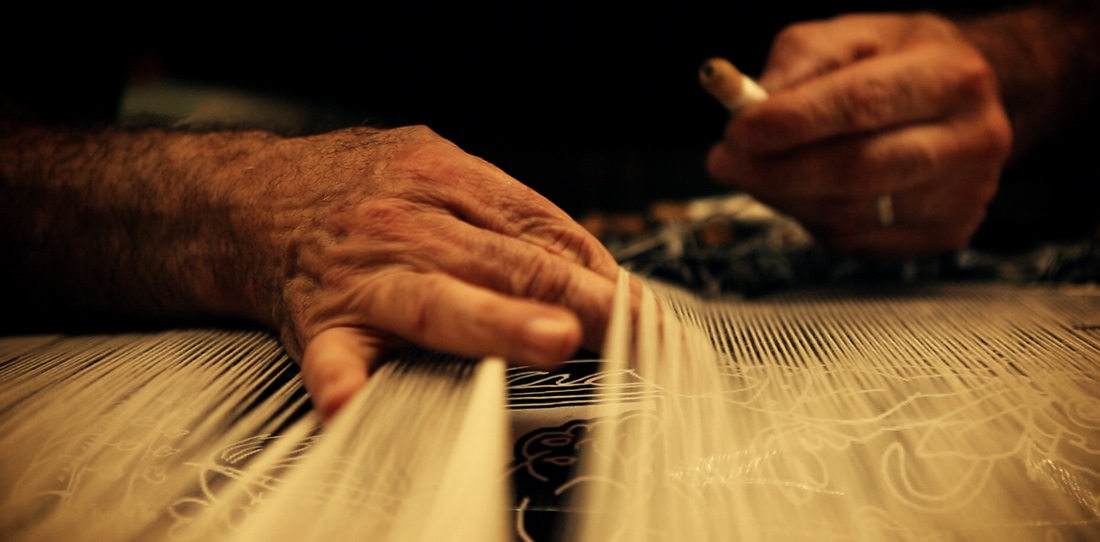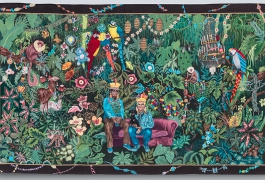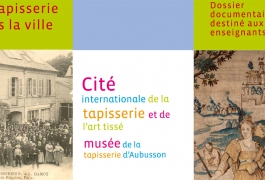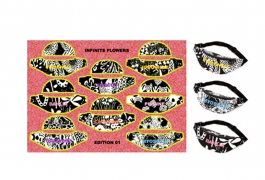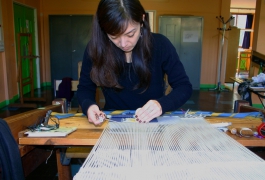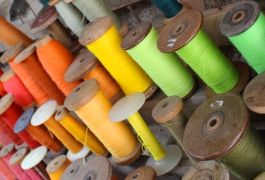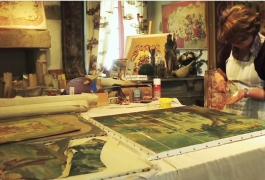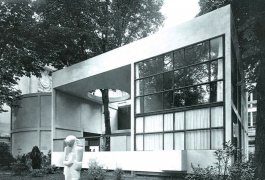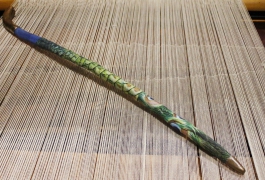Intangible Cultural Heritage of Humanity
The process that led to the inscription of Aubusson tapestry on the Representative List of the Intangible Cultural Heritage of Humanity took place between 2008 and 2009.
It was led by Bernard Bonnelle, then sub-prefect of Aubusson, in collaboration with the departmental museum curator. The State was determined to adress the vulnerability of the sector and ensure the trasnmisiion of a skill currently at risk.
The appreciation of Aubusson know-how rests on two main points :
- The existence of a community of professionals which, for more than five centuries, has kept alive the whole range of skills which go to make an Aubusson tapestry.
The community includes two spinning companies out of the four remaining in France, dyers, three manufactures, eight workshops, cartoons painters, restorers, etc. With the added advantage that in a small area such as the South of Creuse the easy communication between actors enriches the collective experience.
- The interpretation / adaptation work by the weavers of the artist’s creation. Producing a tapestry is a "four-hand process", arising from the exchanges between the creator, originator of an artistic intent, and the weaver, who holds the expertise.
September 2009, General Assembly of UNESCO in Doha :
Aubusson tapestry is officially added on the Representative List of the Intangible Cultural Heritage of Humanity. From the point of view of the public authorities, the Cité internationale de la tapisserie with its various components (professional training, museum, contemporary creation, support of the tapestry sector) seems an appropriate response to the UNESCO labelling. At the moment, this labelling appears to be a very positive factor for the successful outcome of the project. Indeed, it is a very powerful drive toward a federation of all the contributing actors, bringing strong ethics to build a unifying project.
----
Discover the French Centre for the Intangible Cultural Heritage website

